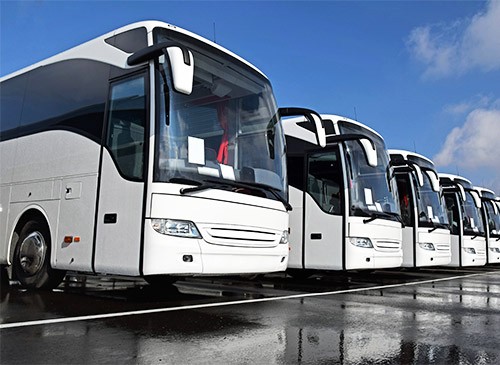Why bus and coach manufactures should switch to composite profiles
John Mertic, at bus and coach composite profile manufacturer Exel Composites, discusses the key benefits of using composite profiles in bus and coach manufacturing compared to aluminum profiles
Many bus and coach manufacturers favor using traditional materials like extruded aluminum profiles rather than composites because of the lower upfront cost and because it’s what they have been comfortable using. However, with an increasing focus on sustainable products, composites can provide bus operators with advantages by delivering improved integrated design possibilities and reducing lifetime maintenance costs. Here John Mertic, area sales manager at bus and coach composite profile manufacturer Exel Composites, discusses the key benefits of using composite profiles in bus and coach manufacturing compared to aluminum profiles.
Composite profiles, in this case fiberglass, can be integrated in most sections of a bus or coach where aluminum profiles are usually found. This includes internal profiles, such as handrails, luggage supports, air ducts, and external profiles, such as cant rails, skirts, and paneling.
Replacing traditional material profiles used in bus and coach manufacturing with composite profiles provides several key advantages, resulting in a reduced total cost of ownership for businesses, despite sometimes having a higher upfront cost.
Reducing cost of ownership
Composites do not have the same maximum width issues as aluminum, meaning composite bus panels can be produced in one continuous profile as opposed to multiple narrower panels joined together to reach the same width. Composite profiles can be up to 1.6 m wide (63 inches), while aluminum profiles are more limited in size. This means installation, replacement, and maintenance of composite panels is a faster, simpler, and a less labor-intensive process compared to using aluminum.
Composite profiles can also come equipped with a peel-ply surface that is applied during the composites’ manufacturing process, creating a surface that remains clean and ready for bonding. Bonding composites to the bus in this way eliminates the need for additional rivets and screws and further reduces labor requirements.
Composite profiles come with enhanced design flexibility options in terms of their profile geometry compared to traditional metal profiles. This allows manufacturers to produce a single complex profile that incorporates the functions of multiple traditional aluminum parts, resulting in a more elegant design that is simple to produce, requires less assembly work, and provides fewer opportunities for human error during installation.
Furthermore, composites also bring the additional benefit of being corrosion and rust resistant, meaning they can withstand pollution or salty road conditions unlike aluminum surfaces, which corrode over time and require regular maintenance.
Fiberglass composite profiles are also significantly lighter in weight than comparative metal profiles, which means buses and coaches fitted with composite parts have an opportunity to increase fuel efficiency and, thus, lower carbon emissions. The weight saving is particularly beneficial after increases in global fuel prices, particularly for diesel, as this leads to increased fuel efficiency and lower overall fuel costs for businesses.
As the industry moves away from fossil fuels towards electrification, the weight savings will also support longer electrical autonomy in buses and coaches.
The composite market is much more stable than the metals market, with less volatile pricing and more predictable lead times. Manufacturers that use large volumes of steel or aluminum are at the mercy of market conditions and, in recent times, the geopolitical environment, often not knowing the exact price or lead time for parts until they place their orders. This causes a risk of supply chain disruption for bus and coach manufacturers and also impacts profitability.
Using continuous manufacturing processes
Exel Composites specializes in pultrusion and pull-winding, which are continuous manufacturing processes that are well suited for high-quality, high-volume production. These enable it to provide large composite profiles that have consistent production quality batch-to-batch and are highly repeatable.
In the pultrusion process, strands of glass or carbon fibers, mats and/or technical fabrics are pulled together, saturated with resin, and then pulled into guides that feed into a heated die to cure the composite in a process called thermosetting. This profile can then be cut to the desired length. This manufacturing method supports the increased flexibility options discussed previously. For example, it allows manufacturers to add additional reinforcement fibers to only one part of the profile where it is needed, so there are no wasted fibers or unnecessary additional weight.
All these advantages mean fiber reinforced composites could hold the key for forward-thinking bus and coach manufacturers looking to construct lighter, more efficient vehicle bodies that offer long service lives and reduce ongoing maintenance costs.
To find out more, visit https://exelcomposites.com/composite-solutions/composites-in-transportation/bus-and-coach-profiles/
Byline: John Mertic, Exel Composites
Category: Cab, Trailer & Body, Cab, Trailer & Body New, Equipment, Featured, Fleet Diagnostics & Software, Fuel & Oil, General Update, Green, News, Products, Shop Stuff, Tech Talk, Transit News, Vehicles











